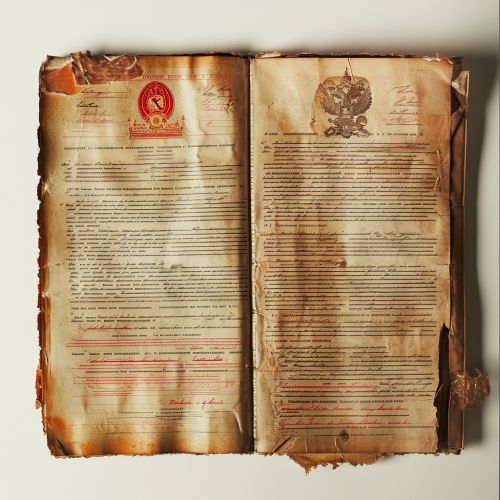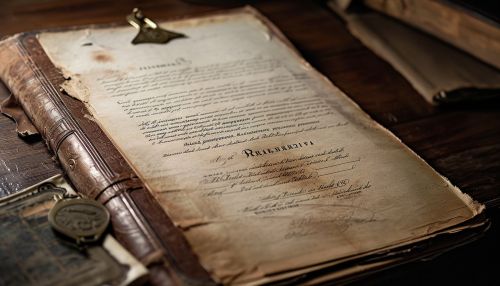Stalin Constitution
Introduction
The Stalin Constitution, officially known as the 1936 Constitution of the Union of Soviet Socialist Republics (USSR), was a constitution enacted by Joseph Stalin, the then leader of the USSR. It was the second constitution of the USSR, replacing the 1924 Constitution. The Stalin Constitution is notable for its proclamation of the victory of socialism in the USSR and the establishment of a socialist society.
Background
The Stalin Constitution was adopted during a period of intense political and social change in the USSR. The First Five Year Plan had just been completed, and the country was in the midst of the Second Five Year Plan. The country was also undergoing a process of rapid industrialization and collectivization, which had profound effects on the social and economic structure of the country. The Stalin Constitution was seen as a means to consolidate these changes and to provide a legal framework for the new socialist society.
Drafting and Adoption
The drafting of the Stalin Constitution began in 1935, under the direction of Stalin himself. A special commission was established to draft the constitution, which included prominent Soviet leaders such as Andrei Vyshinsky, Nikolai Bukharin, and Kliment Voroshilov. The draft was then presented to the Central Executive Committee of the USSR, which approved it in November 1936.
The adoption of the Stalin Constitution was a highly orchestrated event. It was put to a popular vote in a national referendum, in which it was reportedly approved by over 99% of the voters. However, the vote was widely seen as a sham, with widespread reports of voter intimidation and fraud.


Content
The Stalin Constitution consisted of 11 chapters and 137 articles. It declared the USSR a socialist state of workers and peasants and proclaimed the victory of socialism in the country. It also outlined the structure of the Soviet government, including the powers and responsibilities of the various branches of government.
One of the most notable features of the Stalin Constitution was its declaration of a wide range of civil and political rights. These included freedom of speech, press, assembly, and religion, as well as the right to work, education, and healthcare. However, these rights were largely nominal, as they were subject to numerous restrictions and were often violated in practice.
The Stalin Constitution also introduced the concept of "socialist legality", which asserted the supremacy of law in the USSR. However, this concept was often undermined by the arbitrary and repressive practices of the Stalinist regime.
Impact and Legacy
The Stalin Constitution had a significant impact on the political and legal landscape of the USSR. It served as the legal basis for the Stalinist regime and provided a veneer of legitimacy for its policies and actions. It also played a key role in shaping the Soviet legal system and its approach to rights and freedoms.
The legacy of the Stalin Constitution is a subject of debate among historians and legal scholars. Some view it as a cynical and manipulative tool of Stalinist propaganda, while others see it as a genuine attempt to create a socialist legal order. Despite its flaws and contradictions, the Stalin Constitution remains a significant document in the history of the USSR and the broader history of socialist legal thought.
